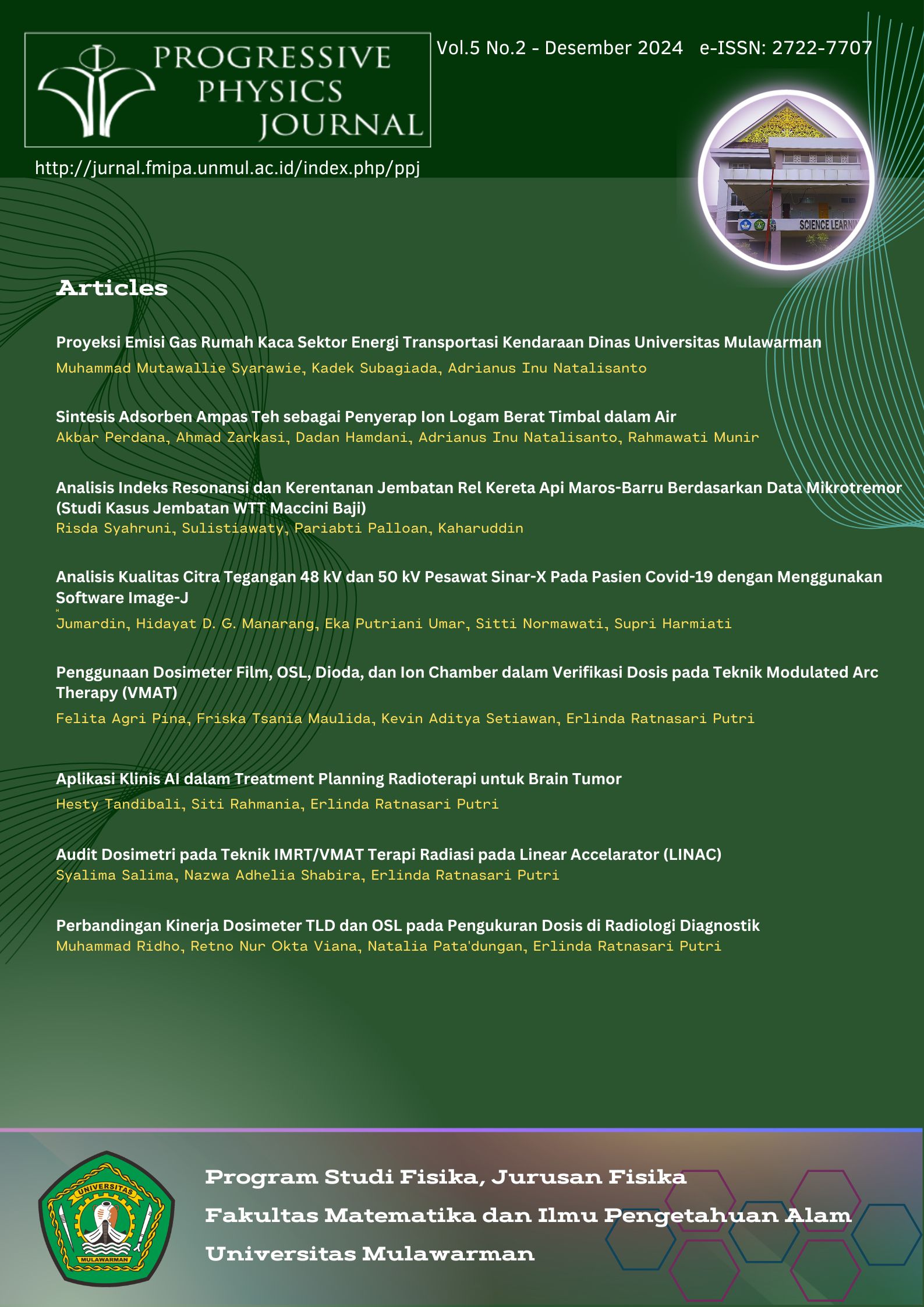Perbandingan Kinerja Dosimeter TLD dan OSL pada Pengukuran Dosis di Radiologi Diagnostik
DOI:
https://doi.org/10.30872/ppj.v5i2.1445Keywords:
OSL;, TLD, Radiologi Diagnostik;Abstract
Radiation dose measurement is crucial for ensuring the safety and optimization of radiology practices. Dose measurement in diagnostic radiology involves a systematic process aimed at accurately quantifying the radiation doses used during radiological procedures, ensuring compliance with safety guidelines. This study aims to evaluate and compare the performance of Optically Stimulated Luminescence (OSL) dosimeters and Thermoluminescent Dosimeters (TLD) in measuring radiation doses during diagnostic radiology procedures. The study utilized a polymethyl methacrylate (PMMA) phantom to simulate the human body. Both OSL and TLD dosimeters were employed to measure radiation doses under clinical exposure conditions. The data collected from both dosimeter types were compared to assess their accuracy, efficiency, and effectiveness in different radiological settings. The results show that OSL dosimeters offer higher sensitivity and faster reading times compared to TLDs. OSL dosimeters also demonstrate a higher level of precision, which is crucial for optimizing radiological procedures. While TLDs still provide reliable results, they require more preparation time and a longer reading process. OSL dosimeters are superior to TLDs in terms of efficiency, sensitivity, and speed, making them a preferred choice for radiation dose measurement in diagnostic radiology and contributing to safer and more accurate radiology practices.







